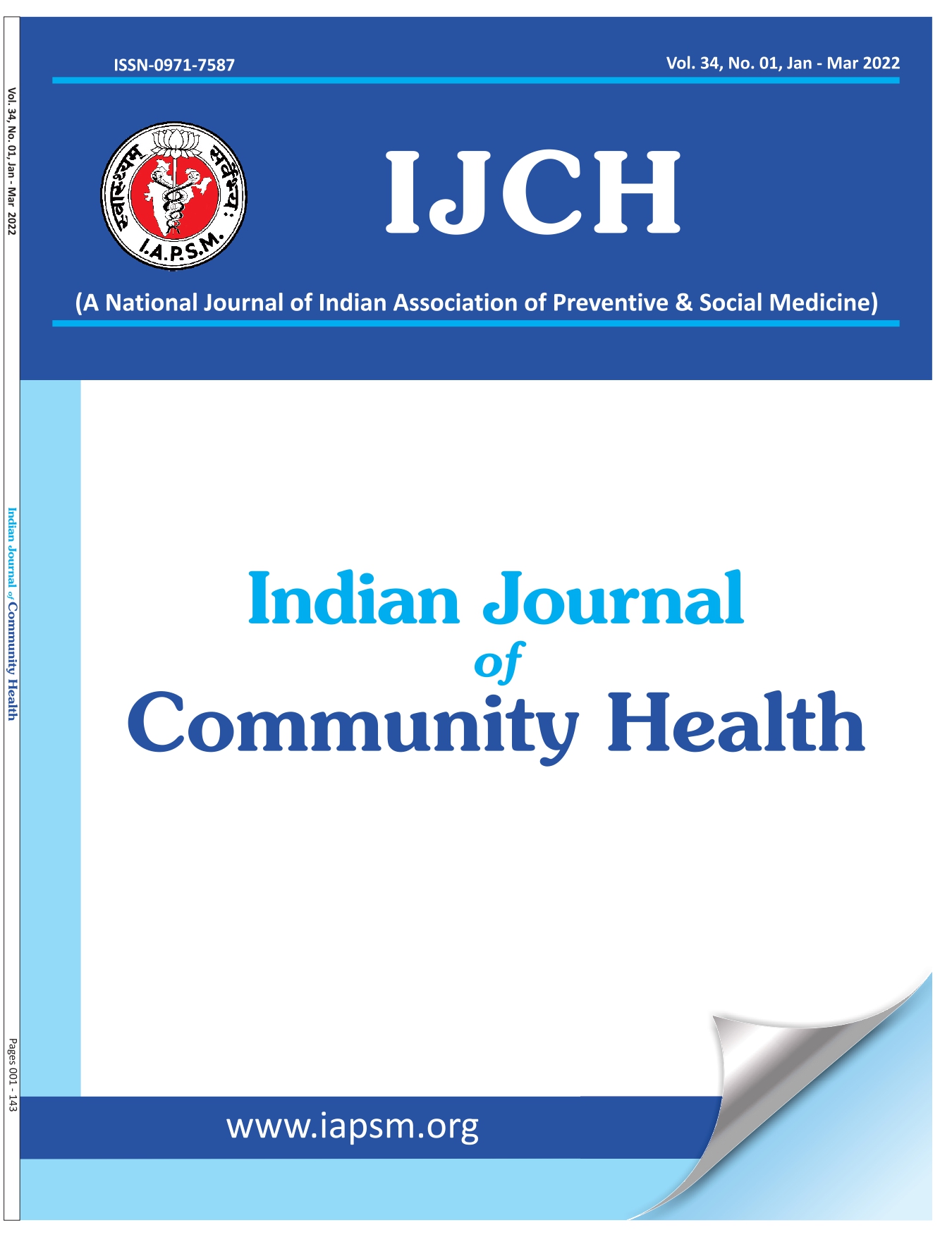Gender Discrimination and Sex-Ratio Imbalance: A Qualitative Analysis
DOI:
https://doi.org/10.47203/IJCH.2020.v32i04.025Keywords:
Gender Discrimination, Sex-Ratio, Beti Bachao Beti PadhaoAbstract
The article strives to engage with the notion of gender discrimination at birth. It critically examines the various trends in the Sex Ratio at Birth in order to explore the intensification of its masculinization. Gender- biased sex selection or the practice of sex determination followed by sex-selective abortion in India is considered to be the main reason for this masculinization. Decennial Census since 1991 has shed light on this through its child sex ratio data. Other survey data which capture this include the National Family Health Survey. Scholars, policy-makers, demographers and health practitioners have closely examined this form of discrimination by delving into both qualitative and quantitative analysis. The government of India has unfurled many policies, programmes and laws to counter this imbalance. However, the ratios continue to reveal severe imbalances with passage of time. Apart from the Pre-conception and Pre-natal Diagnostic Techniques (Prohibition of Sex Selection Act) 1994 we have the Beti Bachao Beti Padhao scheme which was initiated in 2014. The scheme is a holistic one bringing about a tri ministerial convergence of the Ministry of Health and Family Welfare, Ministry of Education and Ministry of Women and Child Development to work on the issue. The approach of the scheme is a community approach falling largely within the rubric of enabling community health practices and participation. The paper draws on both the trends in the Sex Ratio at Birth and other data enriching it by voices from the field from districts of Haryana and Uttar Pradesh where the decline is one of the worst. It contextualizes the Beti Bachao Beti Padhao scheme in this regard in order to arrive at a conclusion of what has improved in terms of numbers as well as attitudes or mindsets. It finally makes suggestions for the way forward in terms of countering gender discrimination at birth and bringing about an egalitarian society by emphasizing on the value of girl-child and women.
Downloads
References
Kulkarni, Purushottam M. (2019) Sex Ratio at Birth in India: Recent Trends and Patterns, UNFPA, New Delhi.
Sen, A. More than 100 Million Women are Missing, New York Review of Books. 1990; 20:61-66.
Coale, Ansley (1991). ‘Excess female mortality and the balance of sexes in the population: An estimated number of missing females’, Population and development Review, 1991;17(3):517-23.
Dubuc S, Sivia DS. Is sex ratio at birth an appropriate measure of prenatal sex selection? Findings of a theoretical model and its application to India. BMJ Glob Health. 2018;19;3(4):e000675. doi: 10.1136/bmjgh-2017-000675. PMID: 30057794; PMCID: PMC6058172.[PubMed].
Agnihotri, Satish. ‘Survival of the girl child: tunnelling out of the Chakravyuha’, Economic and Political Weekly.2003;4351-4360.
Das Gupta, M. and Bhat, P.N.M. (1995). ‘Intensified gender bias in India: A consequence of fertility decline’, Working paper No:2, Centre for Population and Development Studies, Harvard University.
Miller, B.D. (1981). The Endangered Sex, Cornell university press, Ithaca, New York.
Visaria, P. (1971). The Sex Ratio of the Population of India, Census Monograph No. 10, New Delhi, Office of the Registrar General
Guilmoto, C.Z. and S. Irudaya Rajan. ‘Spatial Patterns of Fertility Transition sin Indian Districts’, Population and Development Review.2001;27(4):713-38.
Guilmoto, Christophe Z. ‘The sex ratio transition in Asia.’ Population and Development Review 2009;35(3):519-549.
Nanda B, Ray N, Mukherjee R, Jairaj R. (2019) ‘ Gender Discrimination and Violence Against Women: Connecting the Dots of Declining Child Sex Ratio in India, Mainstream, LVII , 16 : New Delhi
Shiva, Meera (2002). ‘Skirting the Issue: The Girl Child’, in Seen but not Heard, New Delhi: Voluntary Health Association of India.
Siddhanta, Suddhasil & Agnihotri, Satish & Nandy, Debasish (2009). ‘Sex Ratio Patterns Among the Scheduled Castes in India 1981-2001’, SSRN Electronic Journal. 10.2139/ssrn.2733500.
Patel, Vibhuti (2007). ‘The Political Economy of Missing Girls in India’, in Tulsi Patel (ed.) Sex-Selective Abortion in India: Gender. Society and New Reproductive Technologies, New Delhi: Sage Publications.
Nanda, Bijayalaxmi (2018). Sex-Selective Abortion and the State: Policies, Laws and Institutions in India, New Delhi: Shakti Books, Haranand Publications. n
Visaria, Leela. ‘Two Child Norm: Normalizing the Vulnerable’, Economic and Political Weekly, 2006;XLI(1):41-48.
Oldenberg, P. ‘Sex ratio, son preference and violence in India – A research note.’ Economic and Political Weekly. 1992;27(49):2657.
Hatti, N., Sekher, T. V., & Larsen, M. (2004). ‘Lives at Risk. Declining Child Sex Ration in India’, Lund Papers in Economic History, No. 93, Department of Economic History, Lund University.
Downloads
Published
How to Cite
License
Copyright (c) 2020 Indian Journal of Community Health

This work is licensed under a Creative Commons Attribution-NonCommercial-NoDerivatives 4.0 International License.





